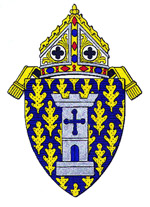Mission Column November 20, 2025
#iGIVECATHOLIC

The
Mission Societies of the Diocese of Ogdensburg is again participating in the
national event #iGiveCatholic! Hosted on
December 2, Giving Tuesday, #iGiveCatholic is an online platform that allows
donors to give to the organization of their choice. All of the money raised by our diocese in
this giving event will go on to support the Missionary Childhood Association
(MCA).
Missionary
Childhood Association (MCA) is a society under the Pontifical Mission Societies
that was formed in 1843 by Bishop Forbin-Janson after talking with Blessed
Pauline Jaricot. His goal was to work with the poorest of the world’s children
in the Missions. Today, MCA continues to follow his vision – “children helping
children” – as children pray and sacrifice for their brothers and sisters in
need around the world. Each year MCA provides health care, advocacy, and
outreach to over 2 million children worldwide.
Throughout
the schoolyear, kids in Catholic schools and religious education programs in
the Diocese of Ogdensburg raise money for those children in other parts of the
world that are less fortunate. Some activities hosted by students to raise
money in the past include penny wars, color runs, bake sales, car washes, and
bottle drives.
Join
the schoolkids of the diocese in helping the children around the world that are
less fortunate by donating on or in the days leading up to December 2.
Donations can be made via the QR code above or
athttps://www.igivecatholic.org/organization/diocese-of-ogdensburg-mission-office.
Advanced giving is now open! Afterwards, head over to social media and
help spread the word and encourage others to #GivetotheMissions this
#GivingTuesday.
Last
year together we proudly raised a total of $1025! This year, we ask that you help us once again
achieve our goal of raising $1000 for the children of the missions! We thank you for your donations and prayers
as we work to help those less fortunate!
Every little bit helps!

To
be added to our mailing list or to learn more please feel free to contact us at amichael@rcdony.org. More information can also
be found on our website www.rcdony.org/mission.
And as always, please remember “The Society for the Propagation of the
Faith” when writing or changing your Will.
